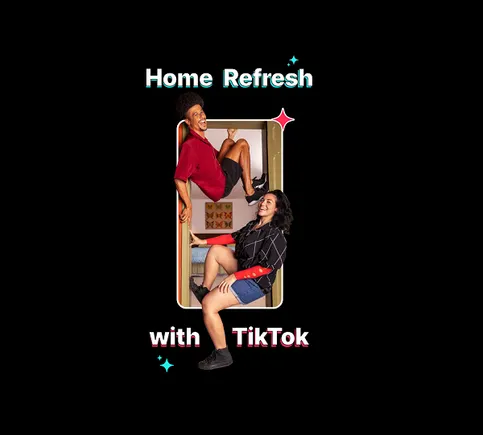TP-Link’s latest smart light strip goes with everything
The Tapo L930 has gradient RGB and tunable white light, and works with Apple Home, Google, and Alexa for under $50 Continue reading…
/cdn.vox-cdn.com/uploads/chorus_asset/file/24025501/226272_TAPO_SMART_LIGHTSTRIP_PHO_jtuohy_0009.jpg)
TP-Link’s newest light strip, the Tapo L930-5, is a great addition to any smart lighting setup. The full-color gradient LED strip has almost everything you could want in a lighting strip — from tunable white light and dimming to music sync and some neat lighting effects, all for under $50. It’s the first lighting product from TP-Link to work with Apple Home, it also works with Alexa and Google Home, and it uses Wi-Fi, so it doesn’t need a hub.
Smart LED light strips are an easy, plug-and-play way to shed some light on a troublesome dark spot in your home or add some cool lighting effects under your cabinets, counters, or even around your bed — if you’re into that kind of thing.
The Tapo L930-5 is an RGBWIC LED strip — that alphabet soup means it has both RGB (with up to 16 million colors) and tunable white LEDs (up to 1,000 lumens). The separate white LEDs give it brighter and higher-quality white light than strips that only have RGB LEDs. The IC part means it uses an integrated chip, so it can display different colors along its 50 different lighting zones instead of a single color at a time. Very few LED light strips have both tunable white LEDs and addressable lighting, fewer still have all that and Apple Home support, and all of those are far more expensive than the Tapo L930-5.
I’ve tested several smart light strips, from high-end Eve and Philips Hue versions to budget strips from Feit, and the Tapo feels like it should cost more than it does. Even if you don’t need Apple Home support, it’s still better than anything else in its price range.
I installed the L930-5 along the underside of my kitchen breakfast bar, where I could use blue light to highlight the blue cabinets and make the bar an architectural focal point or switch to white light to brighten up my dark living room.
The Tapo light strip installed under a breakfast counter.
The 16.4-foot (5-meter) LED strip comes with a small controller with an on/off button and an AC adapter. I connected them, positioned the strip, and stuck it to the underside of my counter (literally stuck; it uses 3M tape). The biggest challenge was finding a spot with an outlet nearby, and I had a bit of trouble getting a smooth fit when going around a tight corner. I ended up cutting the strip instead (the strips are trimmable but can’t be re-connected).
The whole process took less than five minutes, and the end result was wow-worthy. I say that confidently: my teenagers said, “Wow, that’s cool,” when they came home from school, and they are very hard to impress.
Tapo light strip with its controller and AC adapter.
TP-Link Tapo L930-5 specs
The Tapo app, which I’ll come back to, is better than most. But the real power of smart lighting comes from connecting it to a smart home platform like Apple Home (previously known as HomeKit), Google Home, or Amazon Alexa, and Tapo supports all three.
In my kitchen, I have smart light switches from Lutron Caseta and Aqara and smart bulbs from Philips Hue. Using Apple Home, I added the Tapo light strip to a Scene with all those other lights, linked that to a Philips Hue motion sensor, and had them all turn on when someone walked into the kitchen. You can also set up an Alexa Routine to do this. Google Home doesn’t let sensors trigger routines but does support voice control, as do the other two.
TP-Link recently announced the Tapo line will support Matter when the new smart home standard launches later this year. It’s unclear whether existing devices like the L930-5 will be upgraded or whether it will launch new Matter-compatible products, but as Tapo products use Wi-Fi there’s a clear upgrade path. A new version of the Tapo app is coming later this year that Tapo says can “integrate all Matter-supported devices within one ecosystem.”
Unlike most smart lighting control apps, the Tapo app is well laid out, easy to use, and offers lots of features. I could set the lights on a schedule, create six preset light scenes, choose from 17 effects (as well as create my own), and sync with music. The app also monitors energy usage, has an Away Mode (to turn lights on and off randomly to mimic someone being at home), and a timer that will turn the lights on or off after a set period.
The Tapo app’s lighting effects take advantage of the light strip’s fifty individually addressable lighting zones. My favorites were the Rainbow effect for some vivid pops of color and the Aurora for a more soothing light show. I did try to create some of my own effects, which was easy to do in the app, but the presets looked a lot better than anything I came up with. I’m definitely going to be using the Bubbling Cauldron and Haunted Mansion options for my Halloween setup this year.
The Tapo light strip installed under a kitchen countertop.
The Tapo also includes an Auto White mode, which sets the light to white and automatically adjusts the brightness based on available light — though I’m not sure how it does it as I can’t find an ambient light sensor anywhere on it. This is a nice feature, though, and means you don’t end up with a bright light shining at you when you dim other lights in your house. Unfortunately, while it did dim automatically, it stayed at one color temperature, despite the app saying it should adjust from cool to warm. In my testing, the light strip also didn’t work with Apple Home’s adaptive lighting feature. I’ve reached out to TP-Link about both features.
The Tapo light strip can sync to music or ambient sound, which it did relatively well, if a bit more robotically and less smoothly than Philips Hue’s music sync feature. However, it uses the microphone on your smartphone or tablet, not a built-in microphone, as Nanoleaf lights and some Govee strips have. This was annoying, especially as you need to keep the app open on your phone for it to work, and it kept disconnecting. But that might be for the best if you’re not keen on your light strips having a microphone.
If you have multiple Tapo products, you can link them together in the Tapo app with Smart Actions. These are Scenes that let you control multiple devices at once by tapping a tile in the app or Automations that can run based on time of day or when triggered by another Tapo device. The Tapo app only works with Tapo products, not TP-Link’s other smart home line, Kasa. The Tapo line also has an Apple Home-compatible smart plug, and earlier this year, TP-Link announced an Apple Home-compatible power strip, dimmer switch, and color bulbs are coming soon.
The Tapo light strip produced rich, bright colors.
At $49.99 for 16.4 feet of addressable lighting zones, RGB, and tunable white LEDs, the Tapo L930-5 is by far the best, least expensive light strip that works with Apple Home. But if any one of those features is negotiable, or you really want the Adaptive Lighting feature, you have other options to consider — though most still cost much more.
One thing to note is that the L930-5 only comes in one length right now: 16.4 feet (or 5 meters). That’s much longer than most smart light strips, which usually start around six feet, or two meters, though many can be extended up to 32 feet (10 meters) or even longer. TP-Link doesn’t sell extension kits for the L930, but it says a 32-foot version of the L930 is launching next month.
My teenagers said, “Wow, that’s cool,” and they are very hard to impress
Single-color Philips Hue light strips start at around $100 for six feet, and its gradient light strips start at $180 for six feet and 1,800 lumens. You will also need the Hue Bridge to support Apple Home’s Adaptive Lighting. The Nanoleaf Essentials Light Strip ($50, 2,000 lumens) and Eve Light Strip ($80, 1,800 lumens) also support Adaptive Lighting but are expensive to extend and limited to one color at a time.
Even if you don’t want Apple Home support, the L930-5 is compelling. Most light strips in this price range can’t produce high-quality white light because they don’t have separate white LEDs. Losing the white LEDs is not worth the $10 or $15 you’d save by getting the Tapo L920-5, Govee, or Kasa smart light strips.
Unless you’re dead set on Adaptive Lighting or holding out for a light strip that’s guaranteed to work with Matter and Thread, this is the best, most affordable addressable light strip option right now.
Photos by Jennifer Pattison Tuohy / The Verge
Agree to continue: TP-Link Tapo
Every smart device now requires you to agree to a series of terms and conditions before you can use it — contracts that no one actually reads. It’s impossible for us to read and analyze every single one of these agreements. But we started counting exactly how many times you have to hit “agree” to use devices when we review them since these are agreements most people don’t read and definitely can’t negotiate.
To set up the Tapo L-930-5 on an iPhone you can just use the Apple Home app and scan the HomeKit code on the light strip controller. Or you can download the Tapo app (iOS and Android), create an account, and agree to the following:
You can also choose to join the User Experience Improvement Program. Finally tally: two mandatory agreements, one optional.

 FrankLin
FrankLin 































